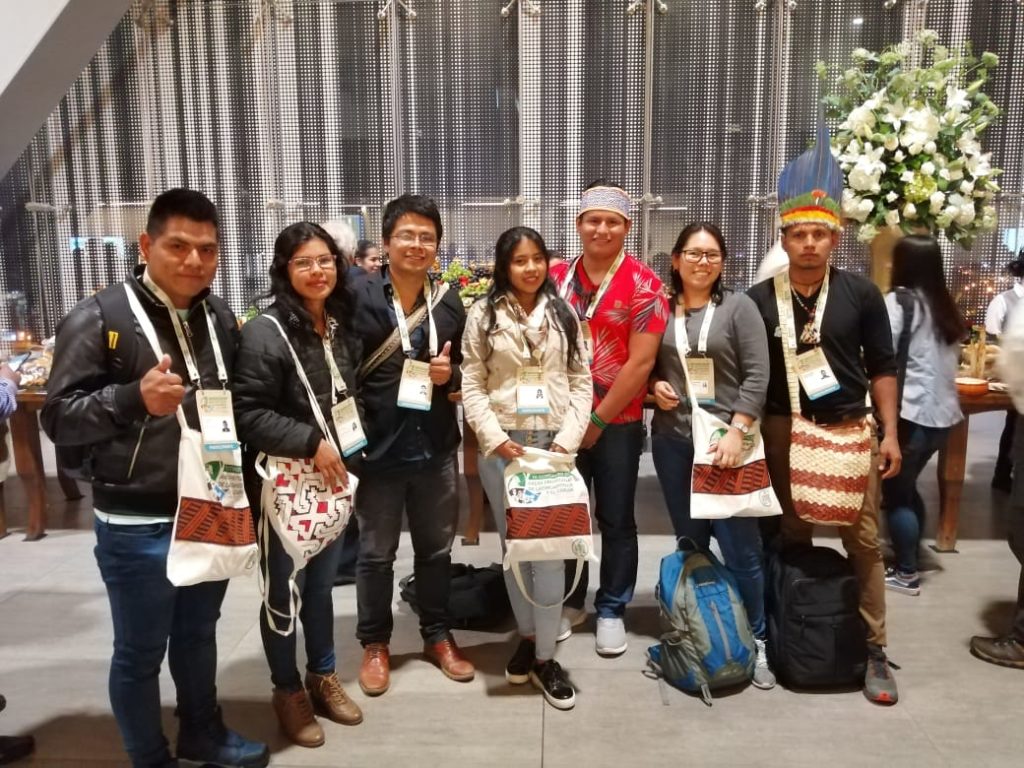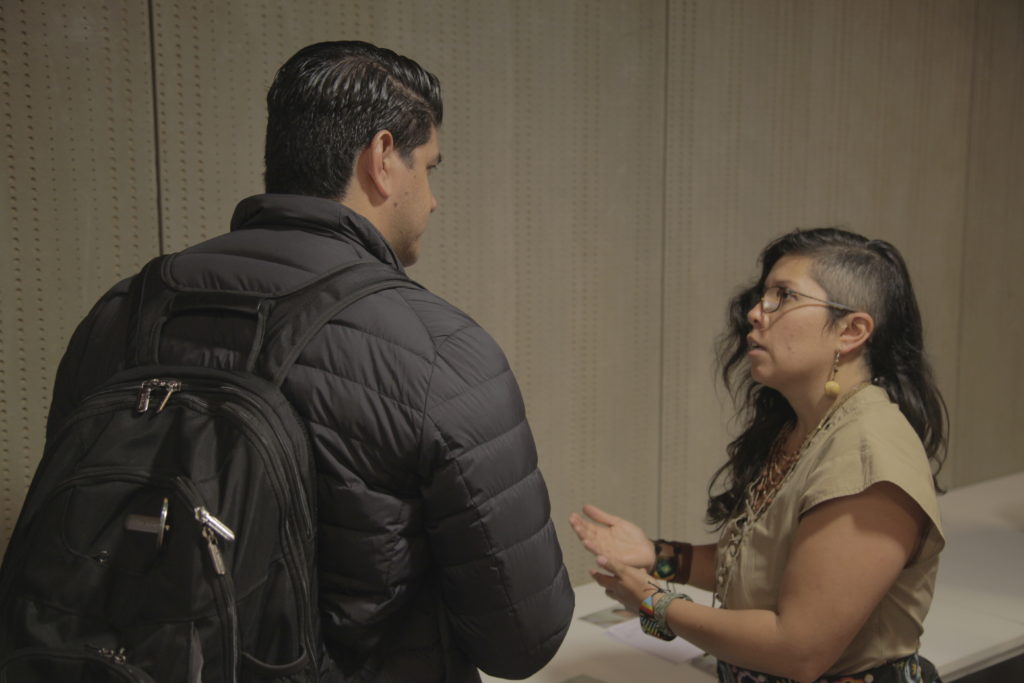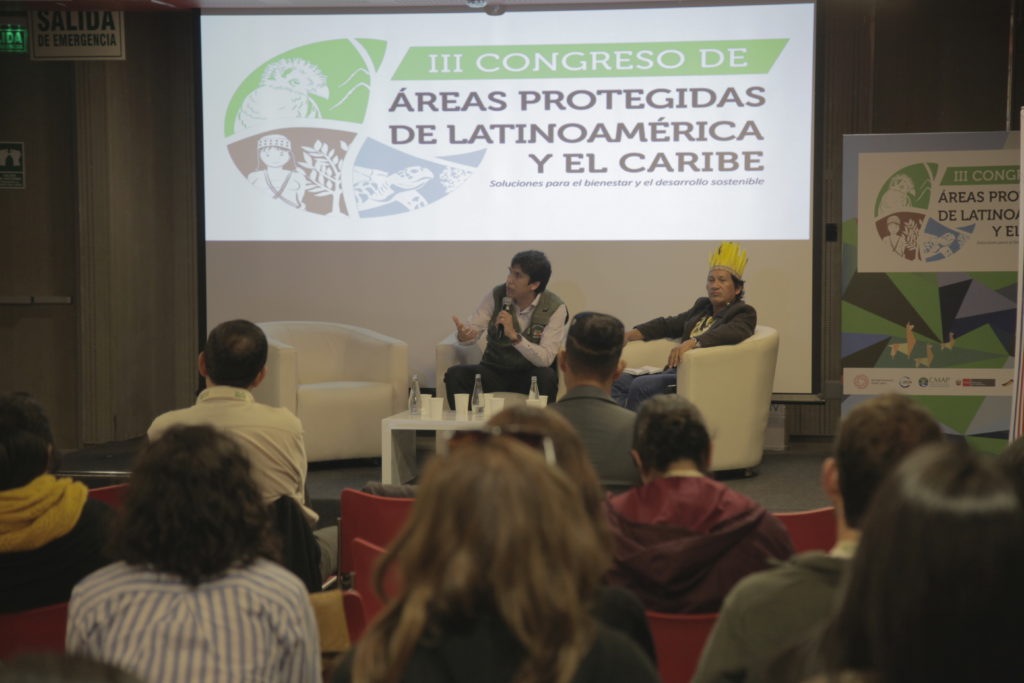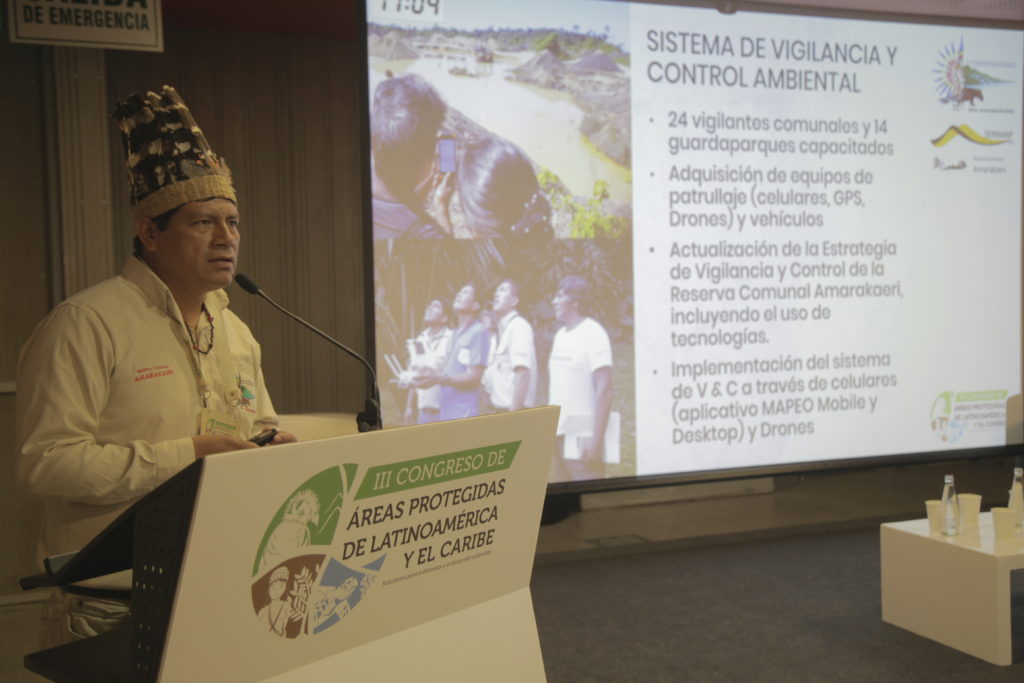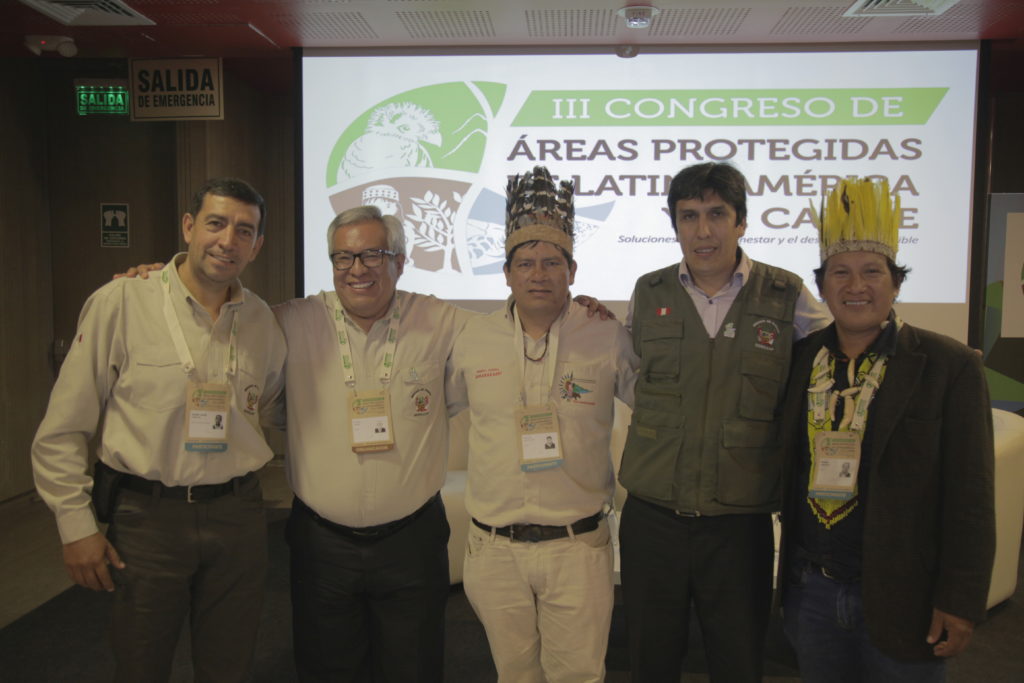Lessons learned at the III Latin American and Caribbean Congress on Protected Areas
By: Eliana Rojas
In mid-october, we were next to indigenous leaders, activists, authorities and representatives of local communities, at the III CAPLAC, in an exchange of experiences and debate for the acknowledgement and protection of protected areas. [1]
Solutions for well-being and sustainable development
With the theme “Solutions for well-being and sustainable development, the congress was the reflection of a real and growing “conservationist” and “park-directed” agenda in the region, to attend to the needs and inputs of people and local and indigenous communities for the management of protected areas.
This is an important task, especially given the accumulated demand from peoples and non governmental organizations to answer to the lack of voice and vote given to the surrounding and settled populations of protected parks and areas, which in some cases are indigenous and native populations that inhabit these territories, known today as protected areas.
Indigenous agenda for the protection of natural areas
The CAPLAC was filled with great moments, such as the presence of indigenous leaders who have taken this cause into the international scenery. For example, Tuntiak Katan, vice-coordinator of COICA (Coordinator of the Indigenous Organizations of the Amazon Basin) who reiterated, during the opening speech, that “it is time to make pacts for our life and our future”.
“it is time to make pacts for our life and our future”.
Tuntiak Katan, vice-coordinator of COICA
Another great milestone was the Indigenous Maloca, a space destined to “build the agendas of the indigenous peoples of the countries of Latin America (also known as Abya Yala), to gather experiences from different countries of the indigenous peoples, and to be able to build its own agenda”, as shared by Tabea Cacique, representative of the Shipibo people in Peru, and coordinator of Education, Science and Technology of COICA.
Youth’s role
Besides having the opportunity to create connections among the attendees; the CAPLAC was a valuable space for young people to share with authorities, political leaders and organizations about their projects in territory and the role of their generation in the strengthening of indigenous rights within local, national, regional and international agendas.
From our side, we endorsed a delegation of young people from Peru, Colombia and Bolivia, who had the chance to share their proposals for the design and implementation of politics, programs and initiatives with consideration of the indigenous knowledge from a intergenerational approach, promoting young people’s point of view. An example of this is a project of valorization and rescue of medicinal plants in Madre de Dios, implemented by the Organization of Indigenous Youth and Students-OJEIMAD. This project seeks to bring value to native products and increase biodiversity of the forests of the region, through the recovery of seeds and use of them in deforested areas, promoting, at the same time, dialogue between the knowledge of young and wise.

Our young representatives participated actively in different spaces of the CAPLAC, including the indigenous Maloca, next to their indigenous and nonindigenous peers from different parts of the region, contributing to the construction of the youth statement of the Congress [2], which emphasized the need to give greater visibility to the indigenous youth.
Women and nature conservation
During the CAPLAC, the women’s nature conservation agenda was consolidated, a document that seeks to generate conditions that enable access and participation of women, promoting innovative spaces of dialogue, so they can be part of the conversation about nature conservation.
In one of CAPLAC’ side event, where this agenda was presented, more than a hundred women participated, among academics, communitary leaders, researchers, government officials, and representatives of local, international and community organizations from Latin America and the Caribbean. This event was filled with emotion, empathy and sorority among women – perfect ingredients to fight the system responsible of the destruction of our biodiversity, ecosystems, cultures and populations.Sonia Guajajara, APIB representative, highlighted that women must act in a revolutionary way, and influence their closest spaces to enforce their voice and rights. Online pharmacy cipro for sale no prescription.

In the Women in Conservation declaration [3] stood out the urgency to create a more inclusive agenda that changes the focus of conservation towards people, ensuring girls and women rights both politically and in territory.
Co-management between the State and the communities
Every space of the III Latin American and Caribbean Congress on Protected Areas shared the same motto: share, learn and propose together. That certainly was the intention behind the side event we put together with our partners: ECA-Amarakaeri, SERNANP, Digital Democracy and the Institute of Social Studies, called: “The model of co-management in the Communal Reserve Amarakaeri, its advances and challenges in the use of technology for vigilance and area control”.
During the event, we learned that in a model of co-management, it’s fundamental to build a relationship of trust, based on mutual transparency, among the State and the indigenous communities and organizations. Also, we reflect on the importance of continuous capacitation as a key for co-management, among widely trained and competent organizations. Fermin Chimatani, president of ANECAP, mentioned that “in order for co-management to exist, there must be equality of conditions”.
Likewise, we verified, once again, that the integral management of protected areas must guarantee benefits for the communities (such as investment in sustainable productive activities) to conserve their area, as well as to be actively involved in the surveillance and control work. As pointed out by José Carlos Nieto from SERNANP: “Communities must perceive the benefit of conservation, this is key so they’ll want to participate in the surveillance and control”. A surveillance and control strategy by park rangers and community guards should not be seen or applied in isolation to the rest of the area management tools, since they help in fulfilling the commitments and objectives of the master plan, such as the communities life plans, and conservation agreements.
In the event, challenges of the co-management model were discussed, as well as the use of technologies and the complementarity between technological systems established by the State (such as SMART) and those driven by the communities themselves (such as Mobile Mapping and Desktop). Also, the role of compliance of data with the standards of validity of the competent entities to monitor extractive activities, investigate environmental complaints and crimes and achieve environmental justice in the region. In this sense, it is also necessary to promote coordinated work with these entities, to ensure their arrival in the affected areas, as with several other sectors.
Conclusions
At the end of CAPLAC, Tuntiak Katán, shared with us, that one of the main learnings he has had is that while it is important to present demands, it is even more important to accompany these demands with proposals of profound change for the management of protected areas; proposals that position indigenous peoples not as mere beneficiaries of protection initiatives, but as partners, in a peer to peer vision.

This posture is reflected in the Declaration of the Indigenous Peoples of Abya Yala and the Declaration of the III CAPLAC [4] – from inspiration to action. The ideas, commitments and demands expressed in these documents will be taken to the next IUCN World Congress, in Marseille, and finally – expectedly – to the management and concrete implementation to the protection of natural areas.
[1] Taken from the website at https://www.areasprotegidas-latinoamerica.org/
[2] [3] [4] Spanish only

